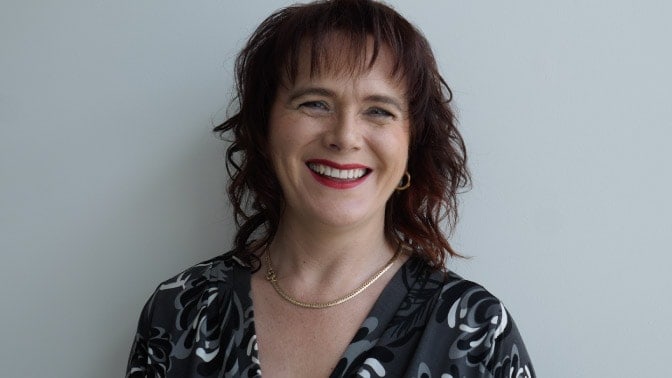For years now, UXer’s have been asking for a non vendor-specific way to certify their role as a UX practitioner. This would be a way to acknowledge their skills for jobs – especially if they’re changing their careers, and don’t necessarily have ‘UX’ experience on their CV.
After many user research interviews, tests and pilot runs – the team at PeakXD in Australia has developed a program, in collaboration with the British Computing Society (BCS), that upon completion gives you a UX certification valid in over 200 countries.
We sat down (or, video called, technically) with Tania Lang – one of the few instructors and writers of PeakXD’s 12-week Accelerator Program – to talk about the exciting new course.
What were the motivations to create a certified course?
It was just something that a lot of our customers were crying out for. It benchmarks professional’s skills to an international standard, and makes them stand out from other graduates. It’ll help their career progression – either by side-stepping or moving up, it attracts better-paying roles and future proofs them by staying current.
We’d often hear, “Do I get a piece of paper at the end? Should I go back to university and do a three- year, two-year masters, or should I do some course? What piece of paper do I get at the end?” So, it’s largely around customer demand really wanting that piece of paper.
I actually interviewed some employers recently, and pretty much all of them said the piece of paper is nice to have, but the experience is more important. If someone comes to them with 10 years of experience but no piece of paper, that’s probably better than a piece of paper and no experience – but if you have a degree or a certification, that’s a nice extra. I wouldn’t say it compensates for lack of experience, but it brings them extra points, if you like. It’s not critical, but it’s nice.
How is it certified with the BCS?
For many years – 20 even – we’ve been talking about certification in the industry – but no one could ever agree on what that was or what that looked like. What ended up happening was a lot of vendor certification. You’d do a course and get certified for that specific course – but that doesn’t really mean anything.
To me, I think it’s really important to try to build a certain standard and quality within the industry. The challenge in certification with UX has always been that the answer is not always just black and white – “Do you know this or not?” – The answer to something depends on so many things. It’s a little more challenging trying to do certification when the answer’s often “It depends.”
The British Computer Society have sat down with a team, including David Travis*, in the UK and worked out a syllabus that covers a lot of the basics. It’s foundational. So, this is not an advanced course, but it goes through all the foundations that we would expect a UX person to know. It’s focused more on approach and methodology rather than design principles, which are always changing.
Who is this course best for?
Our main target audience, our personas that we’ve created, are primarily people who have some experience in digital or IT, or marketing or psychology or research who want to sidestep their career into UX. They often have a lot of transferrable skills, but they don’t always have the confidence and realize the value of those skills. For example, if they’re a Business Analyst, they might be good at interviewing or stakeholder management – skills we highly value as UX people. The course is giving these people the tools and frameworks that they need to sidestep.
It’s also for people who may have just sidestepped or are starting out in UX roles, and they get that impostor syndrome. They really just don’t have the confidence, or the knowledge, and they’re making bad design decisions and bad research approaches because they don’t have that good, strong grounding. This course gives them those vital foundations to improve.
The PeakXD online UX Accelerator course is great. I love the artefacts and templates, and the step by step guidance throughout… It has practical examples and advice and working on a real business…
– Tamsen M, Melbourne
I feel like I am gaining practical knowledge which will help gain a career in UX.
How is the course structured?
You’re working on a real project, for a real client, in the program. So, it’s set up with 10 modules over 12 weeks, which includes 74 video tutorials – that’s approximately 60 hours to complete it. One of the things that I do in my face to face training is I tell a lot of stories… because you learn through storytelling. People have said “Oh, online won’t work because we’ve got so much value from the stories that you tell in training,” – so I’ve made sure all the stories I tell face-to-face are in the videos as well.
Each module runs for a week and have six to eight lessons in them. Participants can do them at any time… however, people aren’t always good at online learning. They’re not good at self-pacing. What we’ve done to combat this is rather than it being self-paced, is we have a specific intake date. Everyone in that intake works through the program together. Each week you watch videos, do an activity, and then have a live coaching call where they get feedback on the activities that they’ve submitted and also a chance to ask questions. At the end of the 12 weeks you take an exam (at one of the 5000 approved exam centres across 175 countries) which gives you your certification, and you also participate in a digital showcase.
It’s a global course, so what happens with the live coaching call for people in different time zones?
The live coaching call session is recorded, so if they are at three o’clock in the morning in the US, they can watch it the next day. They can also submit their questions prior to that to make sure, if they’ve got any questions, they still get addressed in that coaching call.
How do the real-world projects work?
One of the things we have designed in our program is the opportunity to work on a real project for a real client over 12 weeks and build up that project, real-world experience and also your portfolio at the same time.
We’re trying to replicate a project where participants are working collaboratively. It’s hard when it’s online, everyone’s remote, working individually. So, each week everyone uploads their content, their interview findings, etc. to a Google Drive, and then they can see each other’s work. Between all of them, they might to 10 or 15 interviews – they can then draw on everyone else’s interview findings as well as their own. That way we’re trying to get collaboration just like we would in an agency, where people go off and do interviews, and come back together. We’re trying to get as much collaboration happening as possible, like you would on a real project. That’s why we’re all working on the same project as well, not all different projects.
What kinds of projects do participants get to work on?
We’re trying to find charities or non-for-profit organizations, because part of our philosophy at PeakXD is to empower others to improve the world through human-centered design. We’re trying to find projects where we can do good.
For example, with our next project we’re working with an organization that supports wildlife rescuers – which is a very emotive. As the whole organization is based around supporting wildlife carers, they’re trying to map out the best approach to do that. First of all research; what do they need? And then what do they need digitally? What’s the digital solution to that? We haven’t worked out what the problem is yet, so the program will first of all work out the problem, and then work out what digital solution is… maybe a Facebook group, a website, a forum, an app… we don’t know yet, but that’s for the students to work out.
How does the course help participants connect to potential employers?
We do two things – a portfolio and a digital showcase.
In week 12 we go through building a portfolio. We encourage people to keep records, journals of everything they’re doing – what was challenging, what was the approach, what went well, what didn’t go well – that sort of stuff. When they go to do their portfolio, they build it based on that – because employers aren’t just interested in a bunch of artifacts, they want to see the approach, the challenges, all that sort of stuff.
The other thing we’re doing to help them get a job at the end of the program is what we call a digital showcase. After their course, they can upload their portfolio or link to a portfolio, and that’s going to be open to a small number of employers and UX recruiters who understand the UX space. It’s a way for recruiters to see that pool of graduates and their materials and portfolios.
It’s just a way to showcase digitally, rather than face to face. UX people aren’t always good at selling their own wares, and selling themselves, so this way it’s a little bit less intimidating, and also non-geographic as well.
Why would people choose this course over another out there?
Asides from the certification, we really wanted to try and create something as rigorous as possible but at a budget that people could actually afford. To do this we decided to go with group coaching, but we’re also giving individual feedback when participants upload activities. So they get the best of both individual feedback and collaborative working.
We’ve also set up an arrangement with study loans (for Australian residents), so that if people can’t afford an up-front fee, they can apply through study loans. It’s basically a $200 up-front fee, and the interest rate is pretty reasonable, and then they basically can pay that off over up to four years. So, they could pay it off in as little as $27 a week over four years. That’s nice to be able to offer that for those that can’t afford it upfront.
How have people responded to the course so far?
We had someone recently who had already done another vendor’s course who did our pilot with us – basically she would do the course as normal, but in exchange for her feedback on what to improve she got the course for free – and she said “I’m already finding this is better than the other course,” which was exciting to hear! We did a lot of work over last year putting this together and that was really encouraging that our first pilot was already hitting the mark.
Bonus!
Normally, PeakXD only offers 12-month access to their course modules, as they continually update the modules as new UX trends and foundations come out.
For UX Mastery readers they are kindly extending that 12 month ONLY access – to lifetime access to the video lessons for as long as their program is running (provided your account remains in good standing).
Use referral code UXMASTERY when registering to gain lifetime access.
Enrol now to be part of the October 21st intake.
*A previous version of this article mistakenly named only David Travis as a collaborator on this project with BCS, when it was, in fact, a whole team. You can read more about the certification here.






Best of luck with this initiative. Just to clarify, I was part of a *team* of people who worked with BCS to define the syllabus (it wasn’t just me). Our job was to to create a syllabus for the certification scheme that was closely tied to the international standard, ISO 9241-210. The fact that the BCS syllabus is based on an ISO standard means your students can be confident that the material is widely accepted as best practice and is not based on one company’s pet beliefs about UX.
Thanks for letting us know, David! We’ve updated the article accordingly.